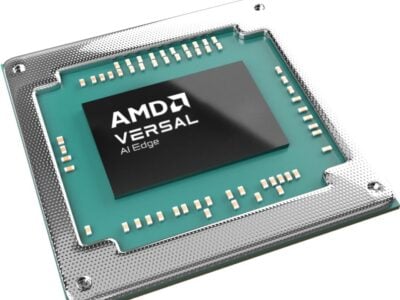
Infineon surfs the automotive wave
“We are more powerful than ever, have achieved 11 billion euros in sales for the first time in a financial year and have significantly increased profitability,” says Dr Reinhard Ploss, Infineon’s CEO. The company’s strategy of focusing fully on the trends of electrification and digitalisation has paid off. In the automotive industry, chips are currently in short supply; many cars cannot be finished because the necessary semiconductor components are missing.
For manufacturers like Infineon, this is a dream scenario. “In view of the continuing high demand for semiconductors for the energy-efficient and connected world, we expect a strong 2022 financial year,” Ploss exulted. At the same time, he announced increased investments and an expansion of production capacities for the innovative semiconductor technologies silicon carbide and gallium nitride, but also for conventional silicon products. According to current plans, the company intends to invest €2.4 billion in the 2022 financial year; the focus will be on expanding front-end manufacturing. Only recently, the company opened another production line for power semiconductors in Austria. In addition, Ploss said Infineon intends to “pull out all the stops” to secure additional capacity from contract manufacturers as well.
In the recently completed fourth quarter of the 2021 fiscal year, group revenue was up 10% to €3.007 billion. In this quarter, revenue growth for products in the Power & Sensor Systems (PSS) segment even exceeded that of products for those in the automotive industry. For the financial year, however, the automotive segment grew rapidly, due in large part to the acquisition of Cypress. The main sales drivers in the automotive segment were the switch to electric drives and the further increase in equipping vehicles with driver assistance systems, sensors and communication equipment.
Overall, the company also benefited from the energy turnaround with the switch to renewable energies and, in the wake of the Covid pandemic, from the increased demand from broad sections of the population for computers, game consoles and other home electronics devices.
Overall, demand exceeded supply in all segments. “With higher production capacity we could have achieved an even higher profit,” says Ploss.
The special attention of Infineon’s developers is currently focused on SiC technology. Here, Infineon not only wants to expand its capacities, the company has also improved its technology. Ploss presented the extraction of wafers from SiC cylinders as an example: In the conventional method of sawing the wafers out of these raw matetrial blocks, up to 75% of the expensive raw material is lost, Ploss said. The cold split process developed by Infineon reduces these losses quite considerably. “This brings very significant cost advantages,” Ploss explained. A first product manufactured using this technique is just about to be released for production, he said.
Related articles:
Chip crisis will last until 2022, say stakeholders
A forecast of when the chip market will decline
Infineon, Hyundai strengthen startup ecosystem in Asia
TSMC agrees to work with US on chip data, risks angering China
Infineon, Picovoice team on voice AI
Infineon boosts capex by 50 percent to €2.4bn
 If you enjoyed this article, you will like the following ones: don't miss them by subscribing to :
eeNews on Google News
If you enjoyed this article, you will like the following ones: don't miss them by subscribing to :
eeNews on Google News


